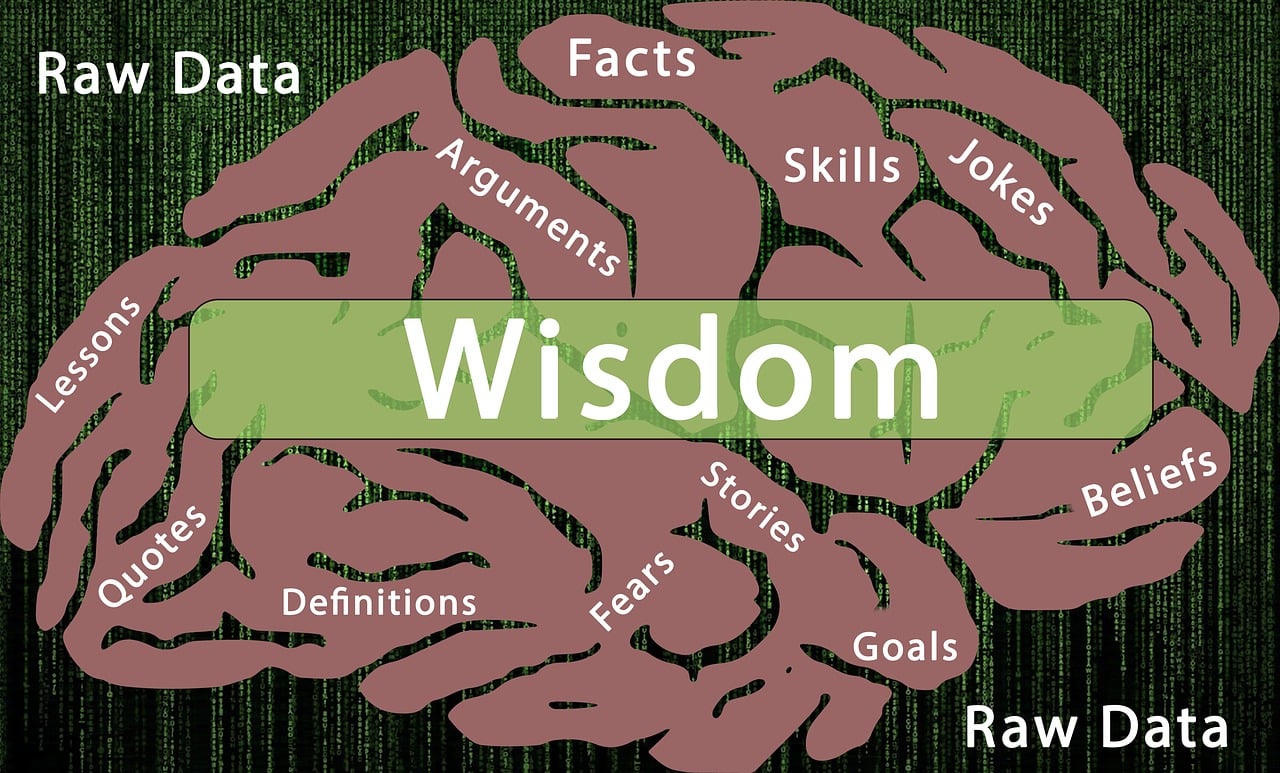Confirmation bias shapes the way people see the world. It’s a mental shortcut that leads them to pay more attention to information that agrees with their beliefs. This bias isn’t just about opinions; it affects decisions in daily life, from choosing friends to making career moves. Understanding how confirmation bias works can help people make more balanced choices.
Examples of confirmation bias are everywhere. Someone convinced a certain job is right for them might overlook better opportunities. Or, if someone believes a specific investment is a win, they might ignore signs it’s not. Recognizing these patterns is the first step to avoiding the pitfalls of confirmation bias. This article explores real-world examples and offers tips to keep this bias from skewing decisions and relationships.
Real-life Examples of Confirmation Bias in Action
| Area | Example | Explanation |
|---|---|---|
| Politics | A person only reads news sources that align with their existing beliefs, avoiding those with opposing viewpoints. | This reinforces their own opinions and prevents exposure to alternative perspectives. |
| Social Media | Following only people who share the same views as you, forming an echo chamber where your beliefs are constantly validated. | This limits exposure to challenging ideas and can lead to a polarized worldview. |
| Health and Wellness | Someone believes that a particular supplement is a miracle cure. They’ll focus on positive testimonials and downplay any studies showing it’s ineffective. | The desire to believe in the cure leads to selective attention to information. |
| Consumer Decisions | After purchasing a new car, an owner might primarily notice other cars of the same model on the road, confirming their belief that it’s a popular and good choice. | They become more attuned to noticing evidence that supports their purchase decision. |
| Relationships | If someone has a negative first impression of a person, they might look for behaviors that confirm this initial opinion, overlooking any positive actions. | This can prevent forming a fair and balanced perspective of the individual. |
Important Notes:
- Confirmation bias is pervasive: It can influence decisions big and small in almost every aspect of life.
- Subtle and often unconscious: We’re not always deliberately seeking confirmatory information; our brains have a natural tendency to do so.
Key Takeaways
- Confirmation Bias Impact: Confirmation bias influences how individuals interpret, remember, and seek out information, favoring what aligns with their pre-existing beliefs and ignoring contradictory evidence. This cognitive shortcut can significantly affect decision-making, from personal choices to professional judgments.
- Recognition and Awareness: Acknowledging the presence of confirmation bias is crucial for personal growth and making balanced decisions. By understanding this bias, individuals can begin to question their assumptions and consider a broader array of information before making conclusions.
- Real-World Implications: Confirmation bias manifests in various aspects of daily life, including social media interactions, financial decisions, political beliefs, and even first impressions. Recognizing its influence can help mitigate potential negative effects on perceptions and choices.
- Strategies to Overcome Bias: Individuals can combat confirmation bias by actively seeking opposing views, questioning their assumptions, engaging in constructive conversations with diverse perspectives, and applying critical thinking tools. These practices encourage open-mindedness and critical evaluation of information.
- Personal and Societal Benefits: By confronting and overcoming confirmation bias, people can make more informed, fairer decisions and foster a more nuanced understanding of the world. This effort contributes to personal development and promotes a more inclusive, discerning society.
Definition of Confirmation Bias
Confirmation bias shows up when people give more attention to information that agrees with what they already think and ignore information that doesn’t. It’s like having invisible glasses on that only let you see what you want to see. This bias isn’t just a small glitch; it plays a big part in how individuals make decisions in their daily lives, ranging from the books they choose to read to the candidates they vote for in elections.
At its core, confirmation bias works by influencing the way a person interprets, remembers, and seeks out information. For example, if someone holds a strong opinion about a hot topic, they might only pay attention to news articles or social media posts that support their view. They skim past or completely overlook anything that could challenge their stance. In essence, confirmation bias acts as a filter, sifting out information that contradicts a person’s existing beliefs.
It’s not just about ignoring the other side of the story. Confirmation bias also impacts memory. People tend to remember facts and details that reinforce their beliefs more vividly than those that don’t. This selective memory can reinforce or even strengthen one’s beliefs over time, creating a cycle that’s hard to break.
Understanding confirmation bias is crucial not just for personal growth but for navigating the world more accurately. Recognizing this bias in action can help individuals think more critically about the information they come across every day. They start to question their assumptions and consider a wider range of information before making up their minds. This awareness is a stepping stone toward making more informed and less biased decisions in various aspects of life, from simple daily choices to significant life-changing decisions.
Impact of Confirmation Bias on Decision Making
Confirmation bias can seriously mess up how people make choices, both big and small. This bias makes someone pay more attention to stuff that backs up what they already think and ignore anything that doesn’t. It’s like having blinders on that block out everything except what you want to see.
In the workplace, this can lead to bad calls. For example, a boss might only notice the good results from an employee they like and overlook the mistakes. This isn’t fair and can hurt the team. Or, when planning a new product, a team might only look at research that says it’s a great idea and ignore any warnings. This could lead to a big flop and lost money.
- Narrow Views: Sticking to what you already believe means you’re not seeing the whole picture. You might miss out on important facts or different ways of thinking.
- Missed Chances: By ignoring information that doesn’t fit with your beliefs, you could pass up good opportunities. Maybe there’s a better solution or investment that you’re not seeing because it doesn’t match your current view.
- Wrong Decisions: Making choices based on a biased view can lead to mistakes. For investors, this might mean sticking with stocks that are familiar but not the best option, missing the chance to make more money or keep investments safe.
Understanding confirmation bias is a big step in making smarter, fairer decisions. It’s about being open to different ideas and info, even if it’s not what you want to hear. This can help everyone make better choices, from everyday stuff to big business decisions.
Real-World Examples of Confirmation Bias
Confirmation bias influences everyday choices and beliefs in noticeable ways. People often gather information or remember facts that back their opinions, ignoring what doesn’t. This phenomenon shows up in various scenarios, from social media usage to financial decisions.
In the realm of social media, users typically follow or interact with content that aligns with their views. Algorithms then feed more of this similar content, reinforcing their existing beliefs. They might scroll past or even argue against posts that challenge their views, a clear display of confirmation bias at work.
Financial decisions also get swayed by confirmation bias. Investors might highlight information confirming their investment is sound, overlooking signals it’s time to sell. This selective acknowledgment can lead to significant financial losses.
Another arena where confirmation bias is evident is in politics. Voters often seek out news outlets and articles that reflect their political leanings. They might dismiss or rationalize away any information that contradicts their party’s or candidate’s stance. This behavior not only solidifies their opinions but also widens the gap in understanding across different political views.
Even in day-to-day interactions, confirmation bias sneaks in. When meeting new people, first impressions often stick. If someone forms a positive or negative opinion early on, they’re likely to interpret future interactions in a way that confirms that initial impression. This can lead to misjudgments and missed opportunities for meaningful connections.
These examples underline how widespread and influential confirmation bias is. It shapes perceptions and decisions in subtle but significant ways, affecting various aspects of life.
Tips to Overcome Confirmation Bias
Confirmation bias can be tricky, but there are ways to beat it. By understanding and applying a few simple strategies, individuals can make better decisions and see the world more clearly.
Seek Out Opposing Views: One of the best ways to combat confirmation bias is by actively looking for information that challenges personal beliefs. This doesn’t mean just skimming through opposing arguments but really trying to understand them. It might feel uncomfortable at first, but it opens up new perspectives.
Question Your Assumptions: Before jumping to conclusions, take a moment to question the underlying assumptions. Why do you believe what you believe? Is it because of solid evidence, or is it just what you’ve always thought? Asking these questions can help shed light on hidden biases.
Engage in Constructive Conversations: Talking to people with different opinions can be incredibly enlightening. Rather than trying to win an argument, focus on understanding the other person’s point of view. These conversations can reveal common ground and new insights.
Use Critical Thinking Tools: Learning and applying critical thinking tools can help evaluate information more objectively. Tools like the “Five Whys” technique encourage deeper questioning and can expose hidden biases in reasoning.
By incorporating these strategies into daily life, individuals can start to recognize and overcome confirmation bias. This doesn’t happen overnight but making a conscious effort to question personal biases and seeking out diverse perspectives can make a significant difference.
Conclusion
Understanding and overcoming confirmation bias is crucial for making informed decisions and broadening one’s perspective. By recognizing the examples of this bias in everyday life and actively seeking to counter it through open-mindedness and critical thinking, individuals can enhance their decision-making process. It’s about embracing the challenge of looking beyond one’s initial beliefs and being willing to engage with diverse viewpoints. The journey toward reducing the sway of confirmation bias isn’t easy but it’s undoubtedly rewarding, offering a path to more balanced views and well-rounded conclusions. With dedication and the right strategies, anyone can learn to navigate this common cognitive bias and emerge with a clearer, more objective understanding of the world around them.
Frequently Asked Questions
What is confirmation bias?
Confirmation bias is the tendency to search for, interpret, favor, and recall information in a way that confirms one’s preexisting beliefs or hypotheses, often while disregarding contradictory evidence.
How does confirmation bias affect decision-making?
Confirmation bias affects decision-making by causing individuals to give greater importance to evidence that supports their existing beliefs and undervalue information that contradicts them. This leads to poor decisions based on incomplete or selective information.
Can overcoming confirmation bias improve relationships?
Yes, overcoming confirmation bias can significantly improve relationships. By acknowledging and challenging our own biases, we are more open to understanding and valuing different perspectives, leading to healthier and more balanced interactions.
How does confirmation bias impact scientific research?
Confirmation bias can impact scientific research by influencing researchers to favor information or data that supports their hypotheses, while ignoring or dismissing evidence to the contrary. This can lead to skewed results and hinder scientific progress.
What strategies can help combat confirmation bias?
Effective strategies to combat confirmation bias include actively seeking out opposing viewpoints, questioning one’s assumptions and beliefs, engaging in discussions with people who have different perspectives, and utilizing critical thinking and analytical tools to evaluate evidence objectively.
Why is it important to be aware of confirmation bias?
Being aware of confirmation bias is important because it allows individuals to recognize and adjust for this cognitive bias, leading to better decision-making, deeper understanding, and more accurate perceptions of reality. It fosters open-mindedness and critical thinking.
How can confirmation bias be reduced in everyday life?
To reduce confirmation bias in everyday life, individuals can practice mindfulness about their thought processes, diversify their sources of information, engage with opposing viewpoints, and apply critical thinking skills before forming conclusions or making decisions.







